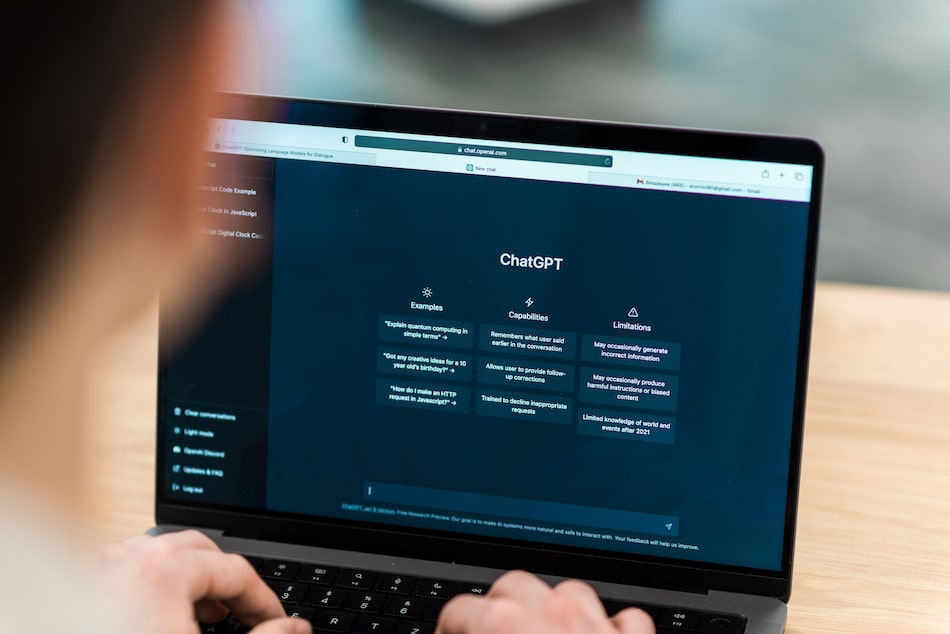Key Takeaways
The manufacturing industry, like any other, has its challenges and opportunities. For any manufacturer, the ideal way to ensure their business proliferates is to keep the impact of threats as minimal as possible. For this reason, manufacturing insurance is vital in protecting a manufacturer’s future. This post reviews the current landscape for manufacturing companies, risks associated with the industry, and solutions to mitigate those threats and avoid the risk.
Understanding the Landscape for the Manufacturing Industry
The manufacturing industry showed promising growth in 2022, surpassing expectations and reaching production and capacity all-time highs. However, several concerns have surfaced from economic instability and inflation that don’t signal an effortless future for manufacturers.
According to the National Association of Manufacturers (NAM), the supply chain disruptions in the second quarter of 2022 affected manufacturers’ confidence and optimism, bringing the Manufacturing Outlook Index 4.2 points down since the first quarter.
Moving forward, a report from Deloitte suggests leaders in the manufacturing industry must keep a check on five trends in 2023. These trends include:
- Managing uncertainty
- Addressing labor shortages
- Promoting supply chain resilience
- Expanding innovative manufacturing efforts to the metaverse
- And fostering sustainability
Risks Manufacturing Companies Face
Navigating the landscape of risks is a universal challenge for manufacturing companies, irrespective of their scale, expertise, or geographic scope. Explore the distinctive risks inherent in the manufacturing sector with a focus on your supplement company.
Workplace Safety
The manufacturing industry is highly labor-intensive, with inherent safety hazards that can result in serious accidents. From operating heavy machinery to handling hazardous materials, workers in these industries are often exposed to safety risks.
Manufacturing companies need to prioritize safety in the workplace by implementing safety protocols and providing proper training and protective gear for employees.
Despite adequate measures, accidents can happen in even the most safety-conscious environments, resulting in a spike in medical bills and lost wages. Such situations can lead to companies facing financial instability and sometimes legal action.
Property Loss or Damage
The manufacturing industry relies heavily on expensive machinery and equipment to produce goods. Even the most minor damages to machinery can result in huge losses, given the high restoration cost.
Natural disasters, such as floods and fires, can cause severe damage to the company’s facilities and equipment, leading to production downtime. Additionally, theft or vandalism can also cause property damage or loss.
Having adequate insurance coverage and investing in security measures such as surveillance cameras and alarms can help minimize the risk of property loss or damage.
Employment-Related Issues
Having employees means you’ll have to deal with the risks associated with it. Common employment-related issues include invasion of privacy, sexual harassment, wrongful termination, and discrimination claims.
These issues can lead to legal action and tarnish the company’s reputation, resulting in workforce shortages and difficulty finding and retaining qualified employees. To minimize these risks, leaders should work on creating a safe and respectful workplace environment.
Leaders can achieve this by implementing clear procedures and maintaining current HR practices to ensure compliance with employment laws and regulations. Offering competitive compensation packages and investing in employee training can also attract and retain skilled workers.
Legal Liability
Manufacturing companies risk legal liability for defective products, even though they usually don’t design them. If a product is found to be defective and causes harm to consumers, the manufacturer can be held responsible for damages or injuries.
Manufacturing companies rely on quality control and assessment systems to reduce the likelihood of producing faulty products. Furthermore, obtaining comprehensive product recall insurance is paramount in safeguarding the company against potential legal and financial repercussions.
Regulatory Compliance
As with any other industry, manufacturing companies are regulated by state laws and international organizations. For example, a company must comply with specific industry standards, such as those set by Occupational Safety and Health Administration (OSHA) and Environmental Protection Agency (EPA).
Noncompliance with their regulations can result in fines and production delays and harm the company’s reputation. To minimize the risk of noncompliance, manufacturing companies must stay up-to-date with changes in regulations, conduct regular audits, and implement robust compliance programs. Investing in insurance, employee training, and technology can ensure compliance with laws. Also, check our post on insurance audits.
Supply Chain Disruptions
The COVID-19 pandemic exposed the vulnerabilities of global supply chains, and manufacturing companies continue to face specific supply chain disruptions. Any disruption, like raw material delivery or shipping delays, can impact production and revenue.
Manufacturing companies can minimize the risk of supply chain disruptions by diversifying their circle of suppliers, maintaining good relationships with existing suppliers, and implementing contingency plans. Facilitating new technologies, such as automation, can help reduce reliance on manual processes and streamline supply chain operations. Also, check our article about robotics insurance.
Making Sense of Cybersecurity in Manufacturing
With recent advances, cybersecurity has become a critical issue for the manufacturing industry due to the quick adoption of automation, robotics, and other technologies. The growth of the Internet of Things (IoT) has led to manufacturers facing unprecedented levels of cyber risk.
According to a report by IBM, in 2022, the total average cost of a data breach for a manufacturing company was $4.35 billion, and 83% of the organizations studied for the report had at least one data breach.
The manufacturing industry needs help to integrate legacy systems with modern technologies. Many computer systems used in manufacturing need more up-to-date security features and are often incompatible with newer security solutions. According to IBM, 28% of data breaches resulted from ransomware attacks.
The manufacturing industry faces yet another critical risk factor – the engagement of third-party vendors and contractors. These external partners often gain access to sensitive information and data, making it imperative that they undergo rigorous vetting procedures. Failure to do so could expose the organization to substantial cybersecurity vulnerabilities. Furthermore, a recent IBM report underscored the gravity of this concern, revealing that a staggering 17% of data breaches stemmed from the compromise of a business partner’s security. To safeguard against such perils, consider implementing comprehensive transit insurance coverage.
Risk Management for Manufacturing Companies
As a manufacturing company, the abovementioned risks can impact your operations and company. Preventing unforeseen challenges means having a proper risk management plan to identify, analyze, evaluate, track, and treat these risks.
Here are five manageable steps to create a comprehensive risk management plan for your manufacturing company:
- Risk Identification: Identify the potential risks that your business faces. This involves thoroughly reviewing your operations, supply chain, equipment, personnel, and other relevant factors.
- Risk Analysis: Now, analyze every risk in detail. This involves examining each risk’s likelihood and potential impact and keeping existing controls in check that may help mitigate these risks.
- Risk Evaluation: Next, evaluate the risks based on their severity and likelihood of occurrence. This allows you to prioritize your risk management efforts and allocate resources accordingly.
- Risk Tracking: As your business evolves and new risks emerge, tracking these risks and their associated controls is essential. This helps you avoid potential threats and ensures that your risk management plan remains adequate.
- Risk Treatment: The final step in risk management is to treat the identified risks. This involves implementing new controls or improving existing ones, transferring risk through insurance, or avoiding certain activities altogether.
Additionally, it’s critical to follow best practices in areas such as cybersecurity and workplace safety. This may include regular employee training, updating security protocols, and conducting regular safety inspections.
In 2022, breaches at organizations with fully deployed AI security systems cost roughly $3 million less than those without automated security systems.
Protecting your manufacturing company with adequate insurance coverage is critical to any risk management plan. This can help mitigate financial losses in a significant incident, such as a fire, theft, or product liability claim. Considering cyber insurance alone, 45% of manufacturing companies had cyber coverage in 2022, compared to the 18% in 2018. Additionally, insurance for influencers who collaborate with your manufacturing company can provide protection in case of unexpected issues arising from these partnerships.
Considering cyber insurance alone, 45% of manufacturing companies had cyber coverage in 2022, compared to the 18% in 2018.
Recommended Coverages for Manufacturing Companies
As a manufacturer, you want to ensure that your insurance company is reliable, reputable, and serves your interests in the best way possible. Here’s a list of recommended coverages best suited for manufacturing companies.
General Liability
General liability offers broad protection against some of manufacturing companies’ most fundamental risks. Known as “slip-and-fall” or “all-risk” insurance, this policy covers personal or property damage and bodily injury occurring on the business premises, such as someone tripping and sustaining injuries while touring your manufacturing facility.
Cyber
With manufacturers relying more on newer technologies to replace manual labor, cybersecurity is now a top priority. Cyber insurance protects companies from third-party lawsuits relating to electric activities (i.e., phishing scams). Plus, it offers many recovery benefits, supporting data restoration and reimbursement for income lost and payroll spent.
Errors & Omissions
Errors and omissions (E&O), or professional liability insurance, covers manufacturing companies in third-party or client lawsuits claiming substandard work or service. Work errors or oversights, missed deadlines, budget overruns, manufacturing defects, etc., often result in costly cases — but E&O insurance responds to these mishaps.
Property
Property insurance responds whether it’s a devastating fire, natural disaster, or burglary. Property coverage policy reimburses companies for direct property losses, supporting recovery and momentum. Manufacturing companies typically have massive facilities, and enduring damage to one part could mean temporarily shutting down the entire operation.
Product Liability
Companies offering tangible products or services risk third-party lawsuits claiming bodily injury or property damage. Consider McDonald’s notorious “Hot Coffee” case in the 1990s, for example. Whether the claims are grounded or not, product liability and product recall cover defense fees and settlements if someone sues your manufacturing company.
Directors & Officers
Shareholders, competitors, investors, etc., can sue a company’s directors and officers, putting their personal assets at stake. Directors and officers (D&O) insurance protects these assets from lawsuits alleging leaders of wrongful acts managing the business.
Workers’ Compensation
Employers are typically responsible for their medical costs and lost wages when employees sustain work-related injuries. Workers’ compensation covers these expenses, protecting employees while running manufacturing operations smoothly. Remember that this coverage is a legal requirement for manufacturers in most states.
Employment Practices Liability
Any company with employees faces the risks of allegations, such as discrimination, wrongful termination, breach of contract, etc. Employment practices liability (EPL) coverage protects manufacturing companies against employment-related lawsuits.
SaaS Insurance
Manufacturing companies can also benefit from SaaS (Software as a Service) insurance, especially as they integrate newer technologies and cloud-based software into their operations. SaaS insurance can provide coverage against data breaches, software failures, and other technology-related risks associated with using cloud-based services and applications.
What’s Next?
The manufacturing industry encounters a myriad of risks and daily challenges. To ensure continued success in this dynamic sector, consider partnering with a specialized commercial insurance broker, particularly one well-versed in insurance for supplement companies.
Navigating the intricacies of determining the ideal coverage for your manufacturing company can be a perplexing task. At Founder Shield, our expertise lies in comprehending the unique challenges that manufacturers encounter, ensuring that you obtain the most comprehensive “creator insurance” tailored precisely to your needs. Don’t hesitate to get in touch with us; we’re here to guide you seamlessly through the process of securing the perfect policy.











